Fatamorgana, Project (2016-2019)
[Fatamorgana 2017, © Fatamorgana 2018-19 — Core of the Project, Fatamorgana 2018, What do we talk about when we talk about Fatamorgana 2018, Affektenlehre 2018, Fatamorgana 2019]
Fatamorgana (2016-2019), Project comprises the theatrical work Fatamorgana (2017), the film © Fatamorgana (2018–19) — core of the project, the publication Fatamorgana (2018), the sound installation Affektenlehre (2018), the film What do we talk about when we talk about Fatamorgana (2018), and the publication Fatamorgana (2019).
Production: Lamaland
Coproduction: BoCA – Biennial of Contemporary Arts, Les Films du Bal
Development support: CNAP – Centre National des Arts Plastiques, Marra.tein, Ashkal Alwan, 2017 Faliro House | Sundance Institute Mediterranean Screenwriters Workshop
Additional support: Colecção António Cachola, Fundação Calouste Gulbenkian, Screen, Walla Collective, Íngreme, Alexandra Moura, DB Studios, Hall of Fame, Escola das Artes – Universidade Católica Portuguesa, MacDowell, Terratreme, Yaddo, Brown Foundation – Dora Maar House.
Support: CCB – Centro Cultural de Belém, Culturgest – Caixa Geral de Depósitos, Dgartes – Direcção Geral das Artes, Fundación Botin
Fatamorgana is both a political parody and a speculative comedy, in which historical and contemporary personalities narrate post – World War II global history and geopolitics, through a web of references and direct citations. The undercurrent is one of sense, illusion, and truth.
Hanan — a Muslim cousin of James Joyce’s Molly Bloom—finds herself, not sure how, in Beirut’s Hall of Fame waxwork museum after its closing hours. Like Homer’s most virtuous Penelope, this woman waits for her husband; she appears to have set a date with him, but he has not arrived—where can he be? While waiting, she begins interacting with the wax figures in the museum’s empty rooms, and the figures respond in turn.
Blending and clashing sixteen differing languages, as well as a variety of fiction and nonfiction sources, Fatamorgana is a multidimensional space, a kind of experiment with truth, or a type of fiction that sets up a platform for the collision of multiple fragments, elements, stories, facts.
The project was self-initiated. The other productions were developed due to other partners and exhibited accordingly.
BoCa – Biennial of Contemporary Art
Lamaland
Les Films du Bal
CCB – Centro Cultural de Belém
Mousse publishing
Fundación Botin
Culturgest – Caixa Geral de Depósitos
FATAMORGANA (2017)
Theater play, 120’, Portugal/France
Commission: BoCA – Biennial of Contemporary Arts
Production: BoCA – Biennial of Contemporary Arts
In coproduction with: CCB – Centro Cultural de Belém, Colectivo 84, Les Film Du Bal
Development support: Marra.Tein, Ashkal Alwan, Cnap – Centre National Des Arts Plastiques
Additional support: Valorpneu,Screen, Walla Collective, Ingreme, Alexandra Moura
Supported: Ministério da Cultura, Dgartes – Direcção Geral das Artes
Commission: BoCA – Biennial of Contemporary Arts
Production: BoCA – Biennial of Contemporary Arts
In coproduction with: CCB – Centro Cultural de Belém, Colectivo 84, Les Film Du Bal
Development support: Marra.Tein, Ashkal Alwan, Cnap – Centre National Des Arts Plastiques
Additional support: Valorpneu,Screen, Walla Collective, Ingreme, Alexandra Moura
Supported: Ministério da Cultura, Dgartes – Direcção Geral das Artes
It transposes the research and text (first edition) of the project into a theatrical play for stage. Within the play, Hanan (Antónia Terrinha) performs an extended monologue, in dialogue with an ensemble cast of pre-recorded voices and a soundscape. Following a brief Pre Prologue, the play begins with the projection of a filmed Prologue. The sections Development and Postface follow. Throughout the performance, subtitles, texts, and citations appear on screen to accompany the piece.
It was developed under the frame of a commission by BoCA — Biennial of Contemporary Arts and first exhibited at CCB — Centro Cultural de Belém (12-13 April 2017)
© FATAMORGANA (2018-2019)
HD vídeo, 2:39, color/black and white, dolby 5.1 sound, 120 min, Portugal/France/Lebanon
Commission: Culturgest – Caixa Geral de Depósitos
Production: Lamaland
In coproduction with: BoCA – Biennial of Contemporary Art, Les Film du Bal
Development support: CNAP – Centre National des Arts Plastiques, Marra.tein, Ashkal Alwan, 2017 Faliro House | Sundance Institute Mediterranean Screenwriters Workshop, Colectivo 84
Additional support: Colecção António Cachola, Fundação Calouste Gulbenkian, Screen, Walla Collective, Íngreme, Alexandra Moura, DB Studios, Escola das Artes – Universidade Católica Portuguesa, Hall of Fame, MacDowell, Terratreme, Yaddo, Fundación Botín
Support: CCB – Centro Cultural de Belém, Culturgest – Caixa Geral de Depósitos, DgArtes – Direcção Geral das Artes
Video Installation Edition: Coleção António Cachola – collection, Portugal
Production: Lamaland
In coproduction with: BoCA – Biennial of Contemporary Art, Les Film du Bal
Development support: CNAP – Centre National des Arts Plastiques, Marra.tein, Ashkal Alwan, 2017 Faliro House | Sundance Institute Mediterranean Screenwriters Workshop, Colectivo 84
Additional support: Colecção António Cachola, Fundação Calouste Gulbenkian, Screen, Walla Collective, Íngreme, Alexandra Moura, DB Studios, Escola das Artes – Universidade Católica Portuguesa, Hall of Fame, MacDowell, Terratreme, Yaddo, Fundación Botín
Support: CCB – Centro Cultural de Belém, Culturgest – Caixa Geral de Depósitos, DgArtes – Direcção Geral das Artes
Video Installation Edition: Coleção António Cachola – collection, Portugal
It transposes and transforms the research, text experience and production of the theatrical play Fatamorgana (2017) into a single-screen film, for projected installation. The film takes core elements from the original theatrical production of Fatamorgana (2017) and moves them, and Hanan (Caroline Hatem), into the space of cinema, through a dense interweaving of still and moving images, text (second generation) and sound produced in Lebanon and Portugal. The film is structured into five sections: Preface, Prologue, Text, Epilogue and Postface.
It was developed under the frame of a commission by Culturgest – Caixa Geral de Depósitose and first exhibited in Fatamorgana at Culturgest, Porto (27 October 2018 – 13 January 2019).
WHAT DO WE TALK ABOUT WHEN WE TALK ABOUT FATAMORGANA (2018)
HD video, 2:39, black and white, dolby 5.1 sound, 40 min, Portugal/France/Lebanon
Production: Lamaland
In coproduction with: Les Film du Bal
Development support: CNAP – Centre National des Arts Plastiques, Marra.tein, Ashkal Alwan
Additional support: Colecção António Cachola, Fundação Calouste Gulbenkian, Screen, MacDowell, Walla Collective, Íngreme, Fundación Botín
Support: Culturgest – Caixa Geral de Depósitos
Reflects the casting sessions conducted in Beirut in 2016 during the research and development of Fatamorgana (2016–2019). It extends the prologues of Fatamorgana (2017) and ©Fatamorgana (2018–2019). Before being attributed excerpts of Fatamorgana’s text in Arabic, interviews were conducted with each one of the actresses. Questions inherent to the text and to the psychology of Hanan, the leading character of Fatamorgana, were discussed. Christine Choueiry, Roula Hamadeh, Caroline Hatem, Nada Abou Farhat and Claude Baz talk openly about their background and upbringing in Lebanon as well as their careers. They share their memories and their viewpoints on politics, religion, society and culture.
WHAT DO WE TALK ABOUT WHEN WE TALK ABOUT FATAMORGANA (2018)
HD video, 2:39, black and white, dolby 5.1 sound, 40 min, Portugal/France/Lebanon
Production: Lamaland
In coproduction with: Les Film du Bal
Development support: CNAP – Centre National des Arts Plastiques, Marra.tein, Ashkal Alwan
Additional support: Colecção António Cachola, Fundação Calouste Gulbenkian, Screen, MacDowell, Walla Collective, Íngreme, Fundación Botín
Support: Culturgest – Caixa Geral de Depósitos
Reflects the casting sessions conducted in Beirut in 2016 during the research and development of Fatamorgana (2016–2019). It extends the prologues of Fatamorgana (2017) and ©Fatamorgana (2018–2019). Before being attributed excerpts of Fatamorgana’s text in Arabic, interviews were conducted with each one of the actresses. Questions inherent to the text and to the psychology of Hanan, the leading character of Fatamorgana, were discussed. Christine Choueiry, Roula Hamadeh, Caroline Hatem, Nada Abou Farhat and Claude Baz talk openly about their background and upbringing in Lebanon as well as their careers. They share their memories and their viewpoints on politics, religion, society and culture.
HD video, 2:39, black and white, dolby 5.1 sound, 40 min, Portugal/France/Lebanon
Production: Lamaland
In coproduction with: Les Film du Bal
Development support: CNAP – Centre National des Arts Plastiques, Marra.tein, Ashkal Alwan
Additional support: Colecção António Cachola, Fundação Calouste Gulbenkian, Screen, MacDowell, Walla Collective, Íngreme, Fundación Botín
Support: Culturgest – Caixa Geral de Depósitos
Reflects the casting sessions conducted in Beirut in 2016 during the research and development of Fatamorgana (2016–2019). It extends the prologues of Fatamorgana (2017) and ©Fatamorgana (2018–2019). Before being attributed excerpts of Fatamorgana’s text in Arabic, interviews were conducted with each one of the actresses. Questions inherent to the text and to the psychology of Hanan, the leading character of Fatamorgana, were discussed. Christine Choueiry, Roula Hamadeh, Caroline Hatem, Nada Abou Farhat and Claude Baz talk openly about their background and upbringing in Lebanon as well as their careers. They share their memories and their viewpoints on politics, religion, society and culture.
AFFEKTENLEHRE (2018)
Sound installation, Dolby 5.1 sound, 20 min, in a loop, neon 25 x 188.4 cm, Portugal
In collaboration with Miguel Martins
Commission: Culturgest – Caixa Geral de Depósitos
Production: Lamaland
In coproduction with: BoCA – Biennial of Contemporary Art
Additional support: Colecção António Cachola, Walla Collective
Support: CCB – Centro Cultural de Belém, Culturgest – Caixa Geral de Depósitos, DgArtes – Direcção Geral das Artes
The doctrine of the affections was an elaborate theory based on the idea that the passions could be represented by their outward visible or audible signs.
It was produced for the exhibition Fatamorgana at Culturgest, Porto (27 October 2018 – 13 January 2019) where it was installed inside a former subterranean bank vault in surround sound.
Lamaland
Culturgest – Caixa Geral de Depósitos
Dgartes – Direcção Geral das Artes
FATAMORGANA (2018)
Publication, offset printing on Inaset 70gr. paper, format 34 X 24 cm, 44pp., Portugal
In collaboration with Isabel Ramos
Commission: Culturgest – Caixa Geral de Depósitos
Production: Culturgest – Caixa Geral de Depósitos
Printing: Gráfica Maiadouro
A publication dedicated to the graphic translation of the project’s text (second edition), alongside a variety of related material.
It was produced to accompany © Fatamorgana (2018–2019) for the exhibition Fatamorgana at Culturgest, Porto (27 October 2018 –January 13, 2019).
FATAMORGANA (2019)
Publication, offset printing, format 15 X 20 cm, 288pp., Portugal/Italy
Language: English
Text: Salomé Lamas, Isabel Ramos, Delfim Sardo, Joost Smiers, Maria Palácios Cruz, Maria Filomena Molder, Pascale Cassagnou, Sara Magno.
QR-code extras: Fatamorgana (2016-2019) complete audiovisuals available online.
Design: Matteo Guallandris
Production: Lamaland, Mousse Publishing
Printing: Gráfica Maiadouro
Additional support: Escola das Artes – Universidade Católica Portuguesa
Support: Fundación Botin
Distribution: Mousse Publishing, DAP | Distributed Art Publishers, Vice Versa Distribution, Les Presses du Réel, Antenne Books
ISBN 978-88-6749-421-7
The last production of Fatamorgana (2016–2019): a publication dedicated to the graphic translation of the text at the heart of the longtime endeavor (third edition), alongside a variety of related materials, including project notes and contributions from Pascale Cassagnou, María Palacios Cruz, Sara Magno, Maria Filomena Molder, Delfim Sardo, and Joost Smiers.
The publication also provides online access to photographic, video, and sound materials, along with technical specifications for all of the project’s component elements


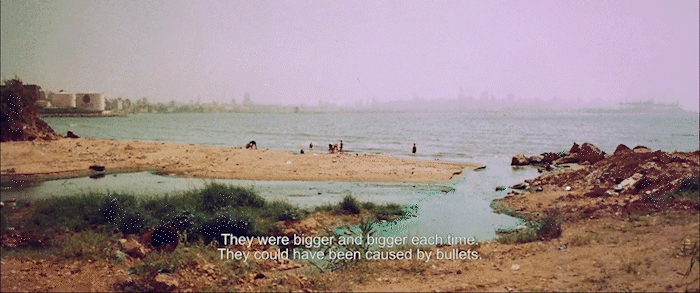


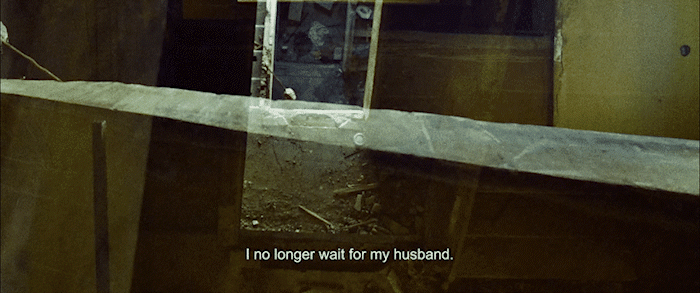













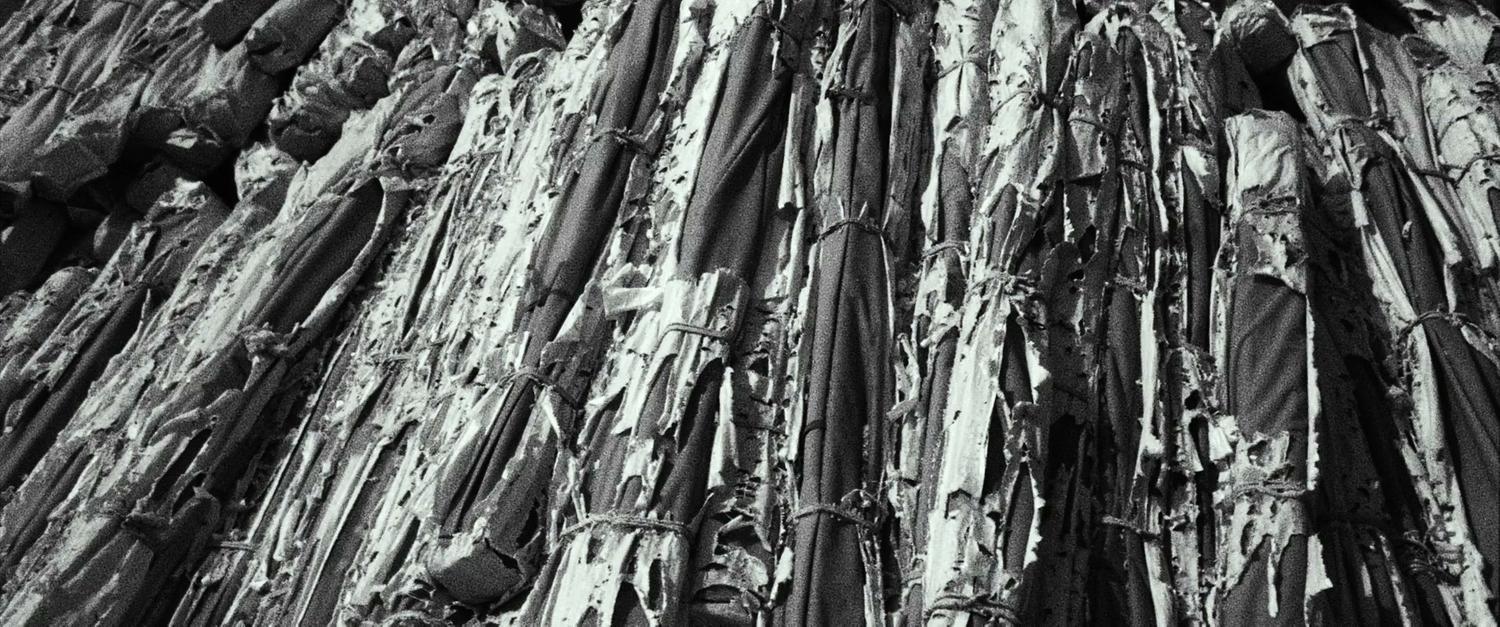

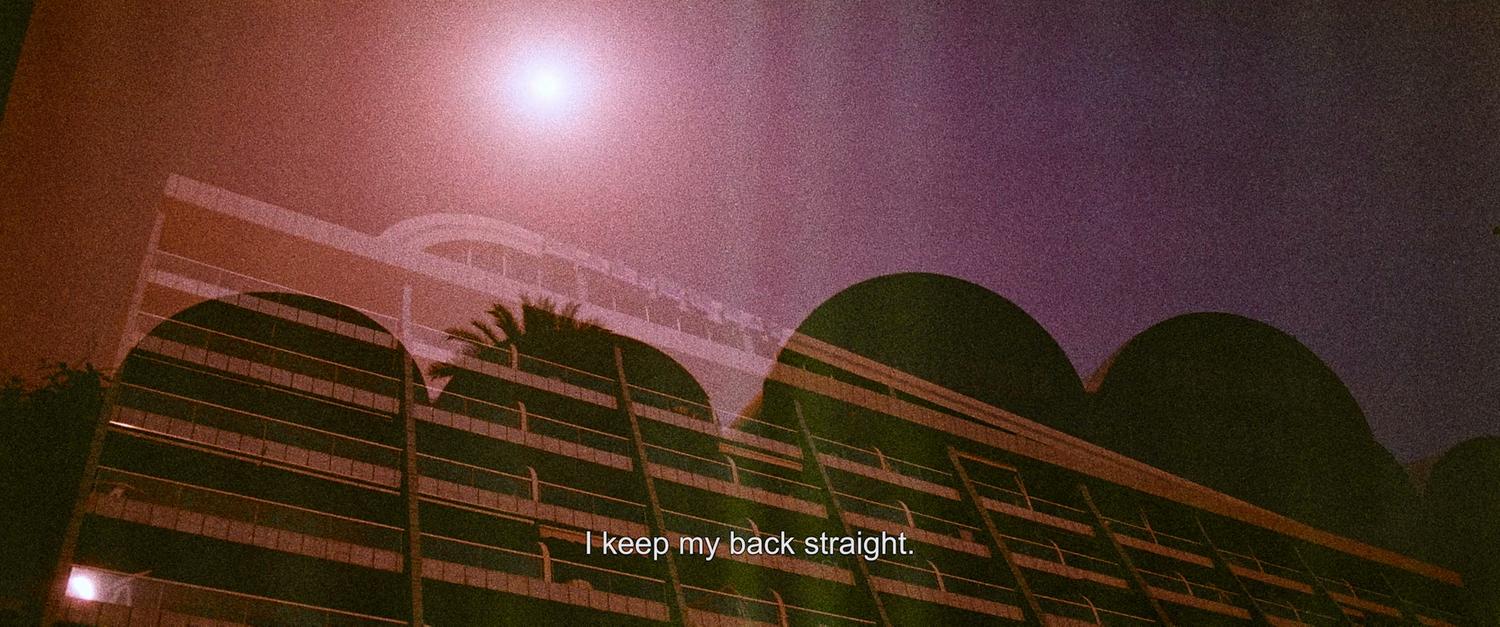



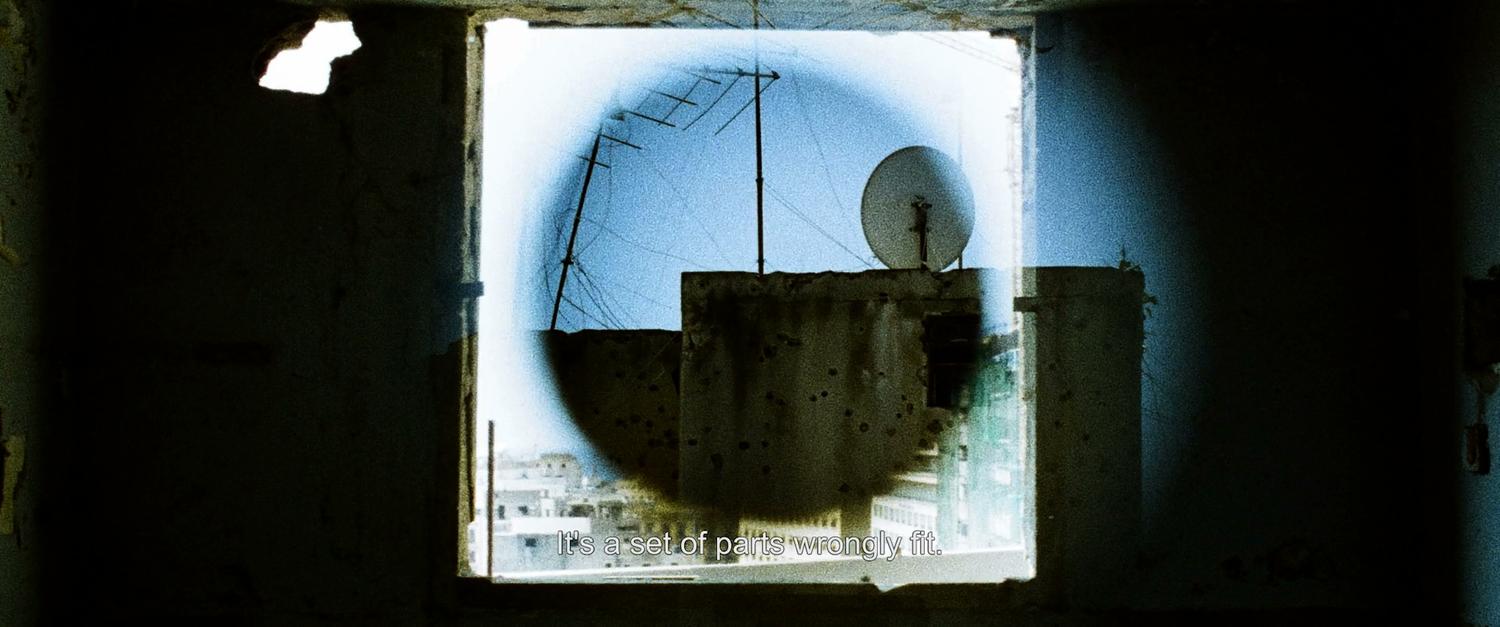





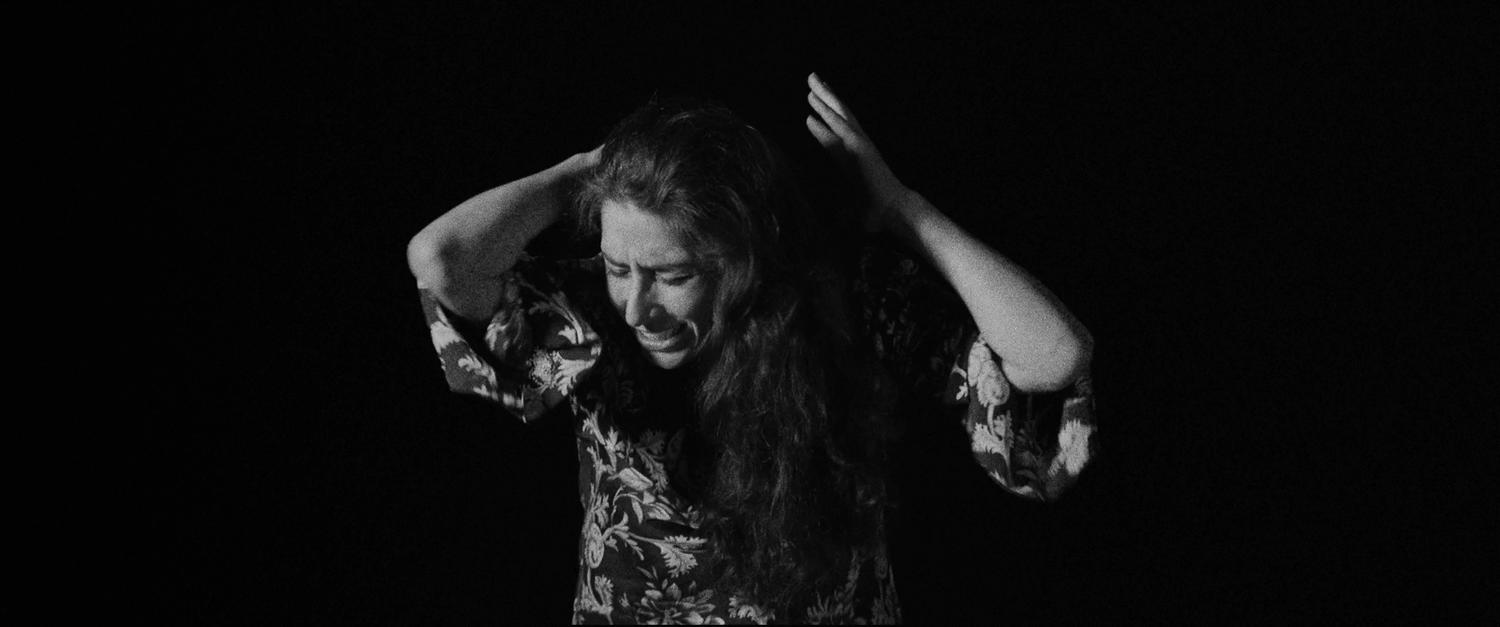





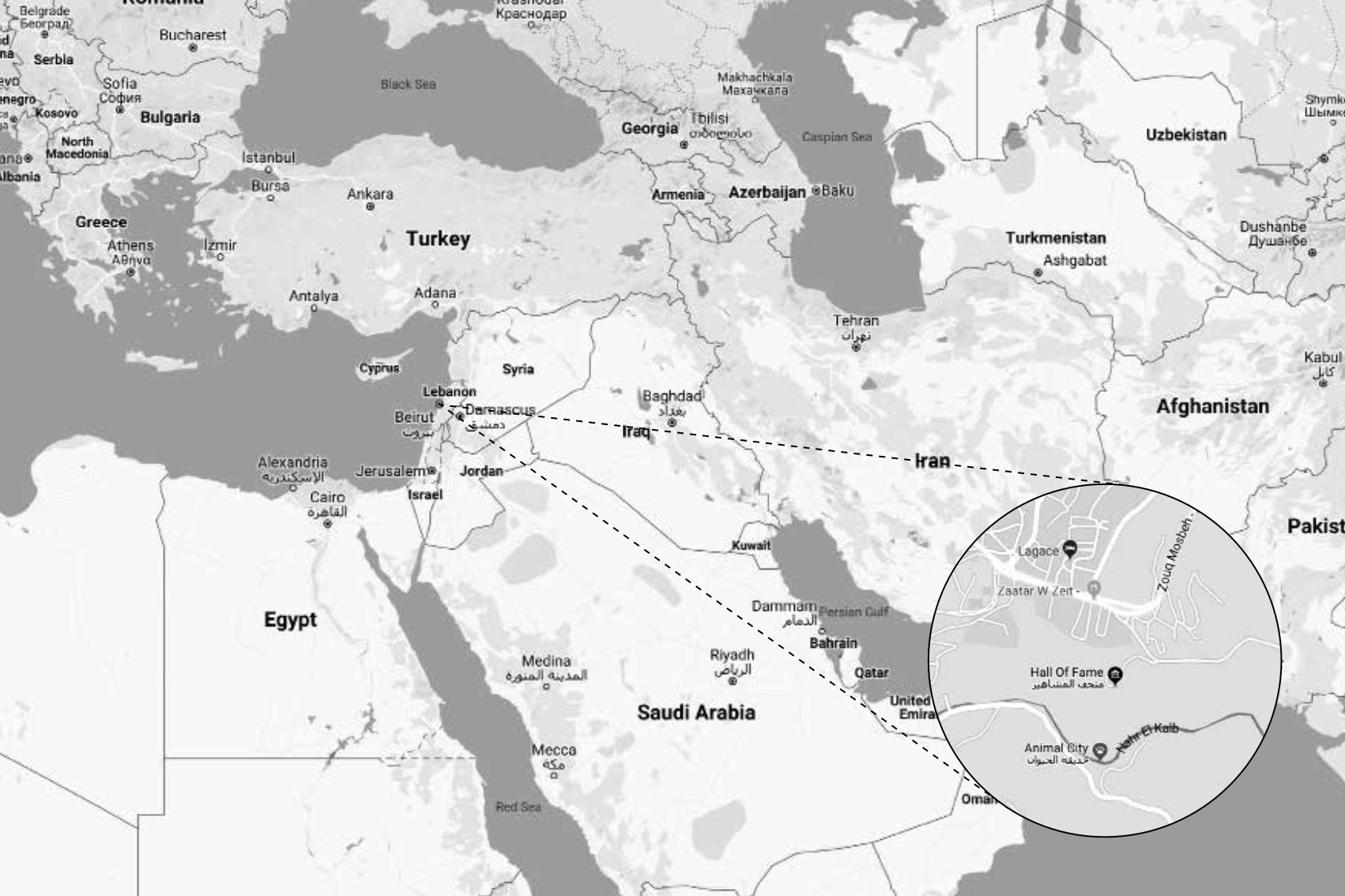



The film’s mise-en-scène, the wax museum, is an odd collection of history: in a time-palimpsest and through the actor’s mimetic voice, a gallery of talking heads delivers a blend of historical speeches and purely fictional statements at times sourced from a tape-record. The speeches are punctuated by the female character that, just like Penelope, knits a thread into an ordinary jumper. As in a choir, the film is underpinned by the structure of the tragedy – the search of a child as well as the absent husband – albeit with the chronology of the narrative running in one day only just as in Joyce’s Ulisses. The structure of Hanan’s speech unfolds - a Diotima constantly interchanging her personal memories with the track of recent history – hovering along the factual, the prosaic, between existential enquiry and historical account, and between tragedy and irony in a babelian overlay of languages and texts. Hence, just as important as the dialogue weaved into a thread of samples (almost the product of a literary DJ), the afterword sums up all contributions resulting as it where in an historical “leporello”. Affektenlehre is a sound installation where bellicose sounds are repeated in a rhythmic mantra while the sound of our steps is hushed in a layer of black rubber. The physical nature of the experience, the film’s long haul, the complexity of the text and intensity of the sound experience conjoin to turn this installation into a bodily-felt essay about contemporaneity but also about the experience of the most unsettling strangeness that comes through in the closely familiar.
Delfim Sardo,Fatamorgana Culturgest 2018FataMorgana is always a ripple of fantasy, an act of witchcraft that transmutes forms by warping them, the cause of aquatic mirages, inversions, elevations, collapses and collages of images. These fantastic visions continue to exist, even though they are now called optical illusions, and they are always generated by atmospheric conditions. In Salomé Lamas’ film (and in all other elements in the project, such as the one which we are explained what is Fata Morgana or FataMorgana) we can observe, sometimes just through guesswork, these variations in the use of the term, stressing that what is happening is a meteorological event, the present weather, with the previously observed reach, here exuded by the war in Lebanon, the invasion of Iraq, the Syrian war and their ruins.
Maria Filomena Molder, And the workmen of Babel have committed suicide: On FataMorgana
